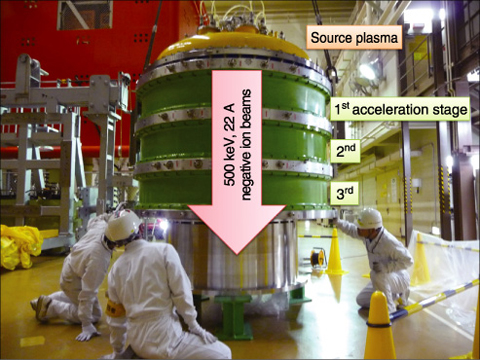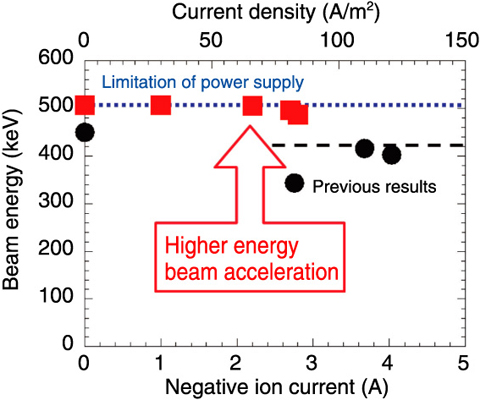
Fig.3-15 Modification of 500 keV negative ion source for JT-60U

Fig.3-16 Voltage holding capability of the acceleration grids and small-area grid

Fig.3-17 Progress in negative ion source development
In fusion devices, neutral beam injectors are widely used to drive plasma current externally and to heat fusion plasmas efficiently. In particular, for ITER and JT-60SA, higher energy beams (above 100 keV) are required to heat the high density fusion plasmas. The JT-60U negative-ion-based neutral beam injector (N-NBI) with rated energy of 500 keV was the first constructed in the world. The use of high-energy neutral beams has contributed to improvement in the plasma performance.
However, the achieved beam energy was limited to 420 keV due to the low voltage holding capability of the ion source, which was designed to have three acceleration stages with large acceleration grids (Fig.3-15). The vacuum insulation distance between the acceleration grids was designed based on existing data, which were not sufficient to predict the required vacuum insulation distance of such large-area girds as the JT-60 negative ion source (2m2).
Recently, in order to achieve high energy beam acceleration, we investigated the voltage holding capability of the ion source by changing the vacuum insulation distances (Fig.3-16). As a result, we found that the required vacuum insulation distance of the large-area grids is much longer than that of the small-area grid. This large difference in the voltage holding capability was also found to be affected by a local strong field around the grid aperture and/or the corner of the grid support. By modifying the ion source based on the newly obtained database, an acceleration voltage of 500 kV has been stably sustained, and a stable H- ion beam acceleration of 3 A up to 500 keV has been achieved (Fig.3-17).
This is the highest beam energy of a beam over 1 A in the world. This success is driven by our understanding of the vacuum insulation distance between the large acceleration grids. Development for the JT-60SA ion source has thus advanced, and this also contributes to the ITER ion source. In addition, new findings for vacuum insulation physics have also been obtained.